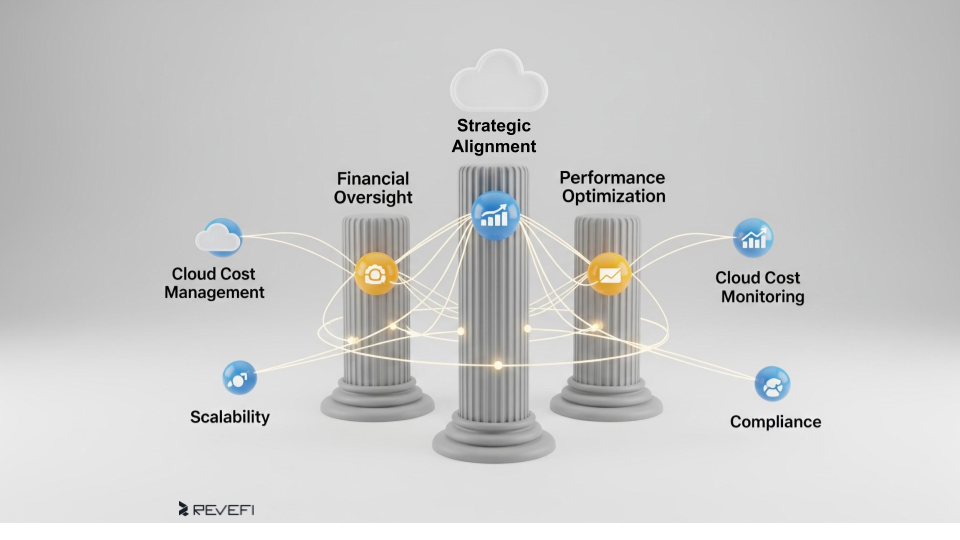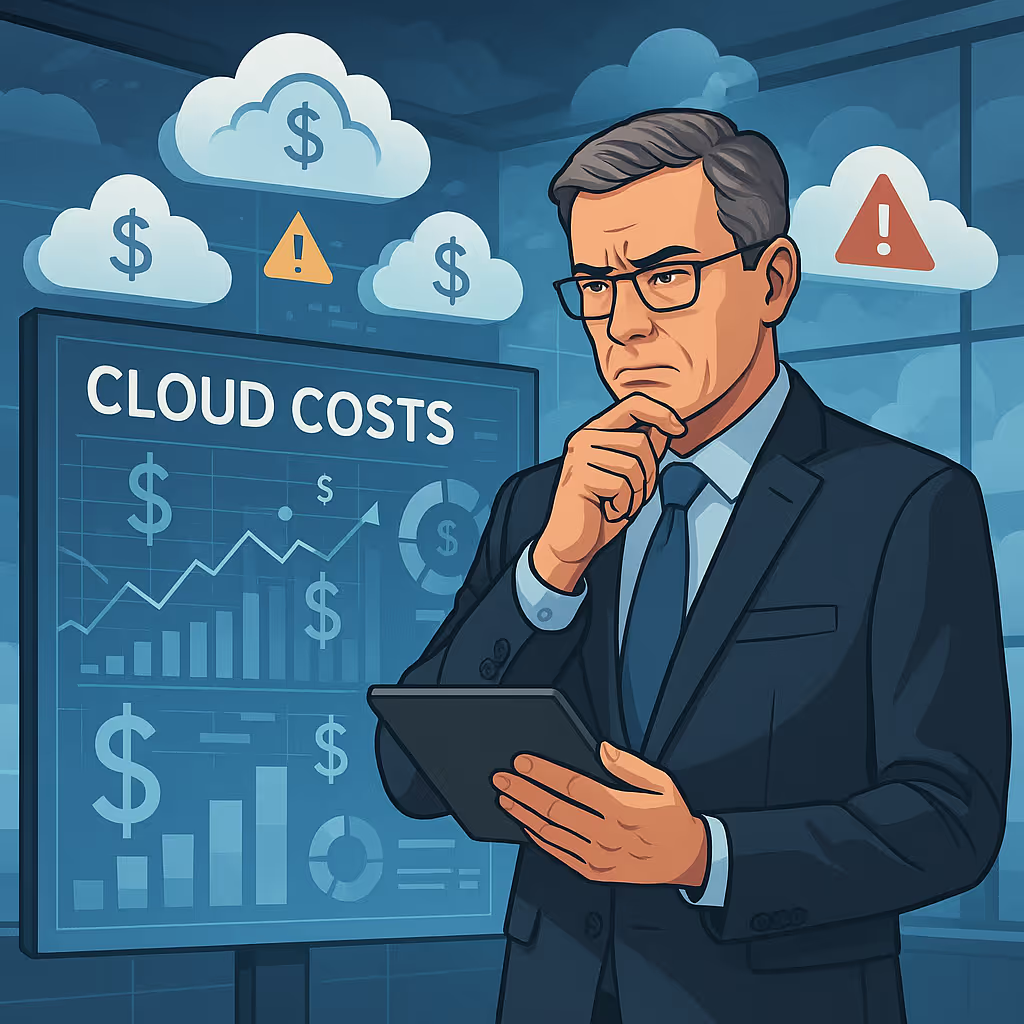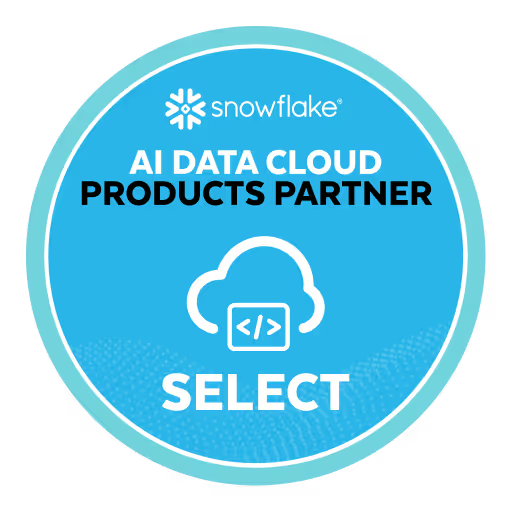A Strategic Framework for Controlling, and Aligning Cloud Data Spend
Modern cloud data platforms like Snowflake, BigQuery, Databricks, and Redshift underpin critical business functions, enabling scalable analytics, AI/ML workloads, and data-driven decision-making at scale.
However, cloud data spend now represents a material impact on your organization’s Earnings Before Interest, Taxes, Depreciation, and Amortization (EBITDA).
Once managed at the engineering or IT level, these costs are often variable, usage-based, and if improperly governed, leads to unpredictable budget overruns.
This guide equips CFOs, Finance Teams, and other senior leaders with a results-driven framework for managing cloud data expenses.
It outlines three key focus areas: Financial Oversight, which emphasizes transparency, ownership, and enforceable policies across cloud data operations; Strategic Alignment, which links data usage directly to business priorities and ensures spend is directed toward high-impact initiatives; and Performance Optimization, which applies FinOps methodologies, intelligent automation, and AI-powered analytics to enhance performance and lower per-unit data costs.

By shifting from reactive cost tracking to proactive value engineering, leaders can better control spend and boost enterprise profitability.
Cloud data costs are no longer just technical overhead! Managing them effectively is essential to achieving sustainable digital transformation and maximizing enterprise value.
Why CFOs Need To Be On Top of Your Cloud Data Costs
Cloud data is driving analytics, AI capabilities, compliance, and operational agility. Yet without structured financial oversight, cloud platforms can shift from strategic assets to unpredictable cost burdens.
Usage-based pricing models introduce volatility, making it difficult to forecast spend with accuracy. Cloud Data platforms follow a consumption-based pricing model, where costs are driven by actual usage of compute, storage, and data movement.
Unlike traditional capital expenditure (CapEx) infrastructure, this introduces variability, making cost predictability difficult and increasing the likelihood of financial inefficiencies.
- Uncontrolled Growth: Without proactive oversight, data warehouse expenses can escalate exponentially year over year.
- Opaque Cost Structures: Engineering teams rarely have budgetary accountability, while finance lacks the tools and context to interpret technical spend.
- Profitability Risk: Inefficient data usage can erode margins, especially when tied to revenue-critical functions like AI and advanced analytics.
- FinOps Requires Collaboration: Optimizing cloud spend requires unified execution across finance, data, and engineering. The CFO is best positioned to orchestrate this alignment and embed financial discipline across teams.

Often, there’s no clear linkage between data consumption and business value, and engineering teams tend to optimize for performance rather than cost. Additionally, effective cost management spans multiple departments, requiring close collaboration between finance, IT, and business units.
For CFOs, leading this effort means implementing a finance-centric approach that enforces accountability, governs usage, and ensures data investments deliver consistent, measurable returns.
1. Cloud Cost Management with FinOps Governance
FinOps Perspective: Financial operations (FinOps) embeds cost ownership into cloud workflows, giving CFOs and CTOs greater visibility and control over cloud data platform spending.
Optimization Techniques:
- Enables granular cloud cost tracking by team, department, and workload.
- Identifies unused compute resources and right-sizes data warehouses.
- Flags expensive or inefficient queries in real time.
- Connects infrastructure costs to business KPIs (like cost per insight or cost per ML model).
2. Reducing Manual Intervention in Cloud Cost Monitoring
FinOps Perspective: By promoting automation, FinOps minimizes dependency on engineering or financial analysts to manually track cloud spend.
Optimization Techniques:
- Implements self-service cloud cost dashboards.
- Automatically suspends idle cloud compute workloads.
- Uses AI/ML-based cost optimization tools to maintain performance without human intervention.
3. Automation-first Optimization, and Fast ROI
FinOps Perspective: FinOps encourages automation-first cloud optimization, helping teams act on cost data in real time instead of reacting post-factum.
Optimization Techniques:
- Uses autonomous AI-powered agents to monitor, adjust, and optimize resource allocation.
- Forecasts cloud spend based on usage patterns and project roadmaps.
- Applies real-time policies (e.g., autosuspend, query tuning) that result in proven cost savings.
4. Enterprise-ready Scalability for FinOps Frameworks
FinOps Perspective: A mature FinOps function scales seamlessly across business units, data platforms, and geographies (irrespective of the team, and company size).
Optimization Techniques:
- Supports high-volume workloads and large user bases (e.g., petabyte-scale cloud warehouses).
- Proven impact across industries (e.g., "30% Snowflake cost reduction across departments).
- Scales cost observability as the organization grows.
5. Cloud Cost Optimization with Security, and Compliance Mindfulness
FinOps Perspective: Effective FinOps practice complements data governance and cybersecurity, helping organizations meet compliance without overspending.
Optimization Techniques:
- Identifies orphaned resources, minimizing risk and cost.
- Prevents unnecessary cross-region data transfers, which are both costly and insecure.
- Enables audit trails, role-based access, and alignment with frameworks like SOC Type 2, and ISO 27001.
6. Seamless Integration with ERP, Finance, and Legacy Systems
FinOps Perspective: FinOps practices are most effective when integrated with existing enterprise systems like ERP platforms, budgeting tools, and observability solutions.
Optimization Techniques:
- Syncs with tools like SAP, ServiceNow, and Snowflake via API.
- Enables chargeback and showback models across departments.
- Provides benchmarks using historical cost data.
7. FinOps for Multi-Cloud, and Hybrid Cloud Architectures
FinOps Perspective: Modern FinOps strategies support multi-cloud and hybrid environments, offering consistent governance across different platforms.
Optimization Techniques:
- Tracks cost and usage across platforms like AWS, GCP, Azure, and Snowflake.
- Prevents cost duplication in hybrid cloud environments.
- Enforces unified policy compliance across distributed architectures.
Final Takeaway for Executives
A robust FinOps framework is no longer optional - it’s a competitive differentiator.
When applied effectively, FinOps enables CFOs, Finance Leaders, CIOs, and Data Leaders to align cloud data warehouse cost optimization with business strategy, scale operations without unnecessary spend, and unlock meaningful, measurable ROI.
By embracing automation, observability, and cross-team accountability, enterprises can turn their cloud financial operations from a pain point into a powerful strategic advantage.
KPIs for Cloud Cost Governance
Every CFO, and CIO should monitor a core set of cloud financial metrics such as these:
- Total Cloud Data Warehouse Spend
- Cost Per Unit of Value
- Utilization Rate of Compute Resources
- Spend Per Active Data User
- Query Success-to-Failure Ratio
- Cost Forecast Accuracy vs. Actual
Conclusion
Each of the pillars identified reflects how a FinOps-aligned cost optimization strategy can support long-term business growth, risk management, and capital efficiency in cloud data environments.
For CFOs, CIOs, and CDOs, embedding these principles into cloud governance creates a foundation for scalable, secure, and sustainable digital transformation.
To learn more, check out our other blogs, and articles. Revefi also recommends FinOps for Data research notes by Adam Ronthal at Gartner Research.











